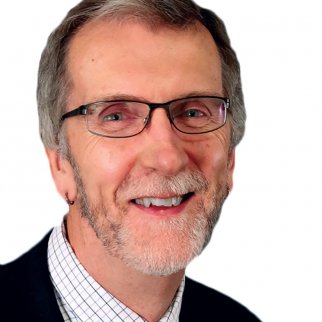
Glen Argan
Benedict’s legacy: hope in eternal love
Few, if any, people in the 20th century thought as deeply about the nature of hope and eternal life as Pope Benedict XVI. Before being named Archbishop of Munich in 1978, Joseph Ratzinger published a theological tome on death, immortality, resurrection, the last judgment and the human destinies of Heaven, purgatory and hell. As Pope Benedict, he wrote an encyclical Spe Salvi (On Christian Hope) based on the belief that Christians know their lives are not empty, that they have an eternal destiny.
Post-pandemic we must be pro-solidarity
As the COVID pandemic began three years ago, many asked what the new normal might be once it subsided. In that question, there was an optimism, even hope, that a massive amount of suffering and death would smarten us up, spur us to become more concerned for the needs of others.
Defeating evil by confronting our own
It has been more than four months since the end of Pope Francis’ visit to Canada to meet with Indigenous people and apologize for the Catholic Church’s involvement and acts of terror in the Indian residential school system. It’s long enough for the next steps in the journey of reconciliation to have been at least discussed. Yet, there has been next to nothing.
Follow the path of self-sacrificing love
Since my teenage years, I have wondered what a better world would look like. What sort of society should we hope for? I also wonder if our world did become better, would we even know that to be the case. That is, what criteria would enable us to determine when the state of the world had improved?
Christ answers our historic kairos moment
People in the modern Western world are often shocked when they read Plato’s Republic and see the great philosopher criticizing democracy as one of the lowest forms of governing society. For Plato, democracy and tyranny (the lowest form) are as one with the tyrant merely the most self-centred type of ruler.
Prudence gives rise to virtuous leadership
The world today has numerous crises — climate change, pandemic, growing discrepancies of power and wealth, the nuclear threat and war, not only in Ukraine but wars in places that go underreported. Perhaps the greatest crisis is the lack of leadership capable of dealing with these substantive crises.
The Holy Spirit isn’t your political backstop
The overriding “reform” of the Second Vatican Council was a renewed call to mission to the world. The reform of the liturgy, the expanded sense of Church as the pilgrim people of God, the openness to ecumenism and the paring back of Catholic triumphalism are all to be of service to that central idea.
Canada needs political prophets of unity, virtue
The aspect of the proposed Alberta sovereignty act which most gives me pause is not the legal chaos into which it will throw this province if enacted — although that is worrisome enough — but the spirit of division which it seeks to codify in law.
Leadership and common ground vital for reconciliation
Pope Francis has fulfilled his mission in Canada. He has apologized in Canada “to survivors, their families and communities for the Roman Catholic Church’s role in the spiritual, cultural, emotional, physical and sexual abuse of First Nations, Inuit and Metis children in Catholic-run residential schools.” That was Call to Action 58 in the Report of the Truth and Reconciliation Commission. The Pope did not come here within one year of the report’s release, as the call to action specifies, but he did get here, apologized sincerely several times and met with groups of survivors from the schools.
The West should be a cardinal point
Pope Francis will lead a consistory to install new cardinals on Aug. 27. The 16 new cardinal electors, eligible to vote in the next election of a pope, come from surprising places, and many are involved with people on society’s margins. As observers note, the men this Pope has named princes of the Church often have no pretensions to royalty. They are God’s servants in the vineyard of life.
